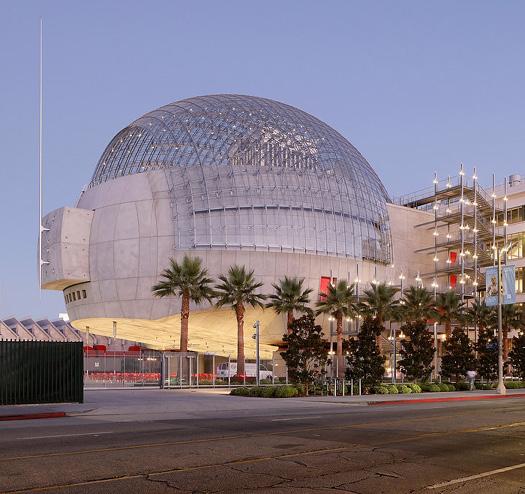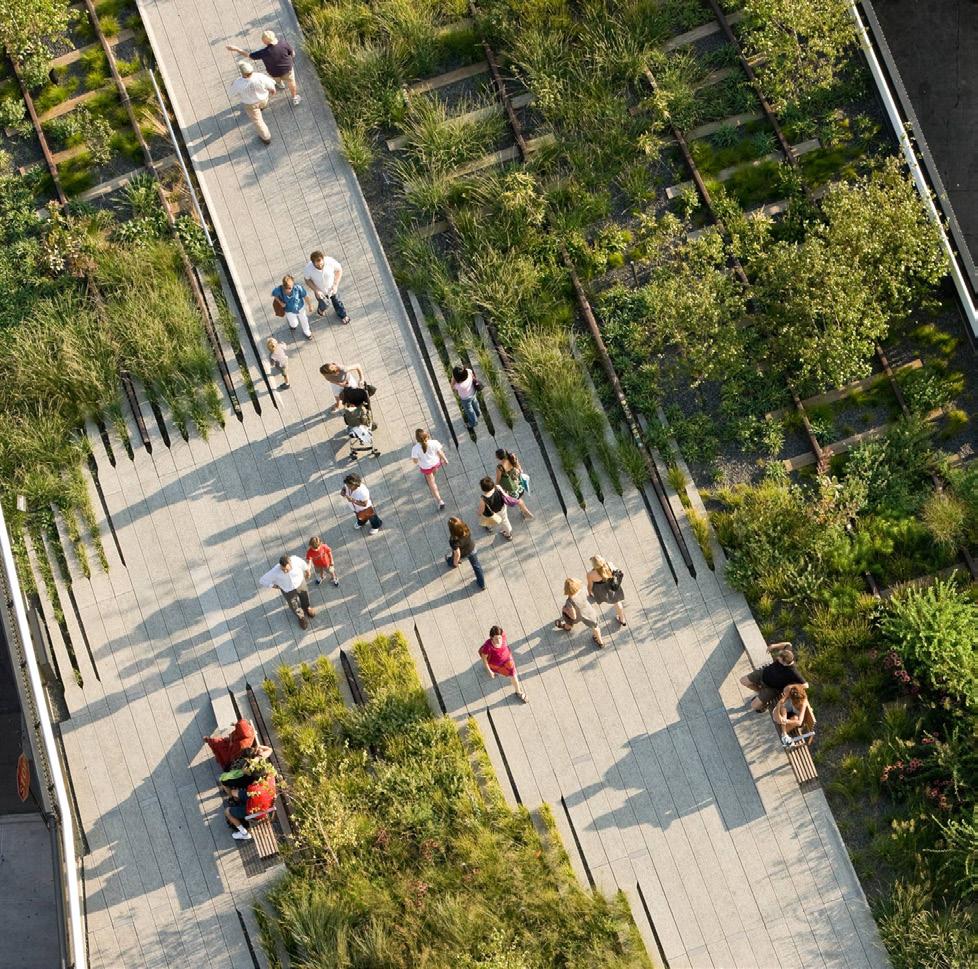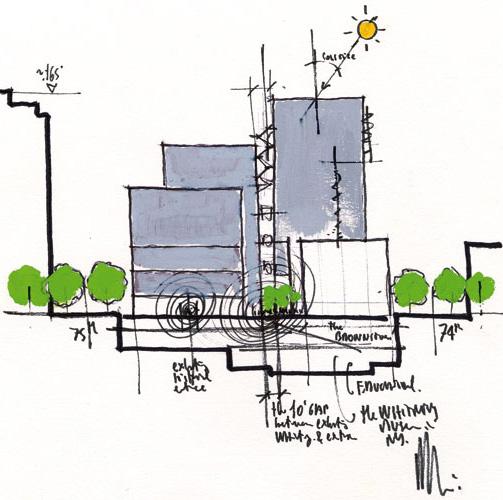Whitney Museum of American Art
New York,USA
Renzo/Piano
Piano is an Italian architect, Born in 1937, known for his innovative, sustainable designs. His work blends modern technology with a humancentered approach to architecture, often featuring transparent or lightweight structures that emphasises natural light and environmental sustainability.
Throughout his career he has desinged many museums and has been considered the most prolific museum designer of our time. Through his designs he improves peoples quality of life by sharing with them a living space designed specifically for the cultivation and dispersion of ideas and the enrichment of civic life. He cares about the individual’s experience of a building, how people interact with the space, and how the space then interacts with the world. At the Whitney Museum, like at the Centre Pompidou, he created a public “piazza” for gathering, socializing and loitering, blending form and function in this building
Renzo Piano
Historical Context
Gertrude Vanderbilt Whitney was a well-known sculptor and passionate art collector. Early in her career, she became a major patron of the arts, founding the Whitney Studio Club in 1918, a New York-based cultural venue where she showcased the work of avant-garde and emerging American artists. Two years later, she opened her museum in Greenwich Village, occupying a spacious building on Eighth Street that spanned three city blocks, with a renovation designed by architect Noel L. Miller.
As its collection grew, the Whitney Museum moved to larger and larger quarters. In 1954, due to the growth of its collection ,it moved to 54th Street, behind the MoMa. In 1966, the museum relocated again to southeast Madison Avenue to the Breuer building where the whitney collection would be located until 2015. The museum struggled for five decades to aquire more space for its exhibits and had to either open more branches or expand the main museum.
The museum launched a construction project on land owned by City Hall, and on April 30, 2015, the new Whitney Museum opened in what is likely its permanent home. The nine-story building spans 19,000 square meters and includes a theatre, education center, library, and exhibition halls. Nearly 5,000 m² are dedicated to galleries, with 1,700 m² for the large permanent exhibition hall, the largest column-free space in New York.
The Breuer Building
Environmental context
The Whitney museum sits just 10 ft above sea level on a tight site near the High Line Park and the Hudson River in lower Manhattan and was a challenging project even before the super storm sandy hit. Construction began in September 2011 and When Sandy’s storm surge arrived, the foundation was complete and structural steel was up to the fifth floor, however 6.5 million gallons of hudson river water began to flood in to the building after the buildings “weather plan” failed.
Amy Hwang, Silman senior engineer, notes that after the storm a lot of structural changes were required to resist potential future floodwaters, but “we were limited by what was already in place.” Steel columns were encased in concrete, and an entire waterproof reinforced-concrete wall was added on the north side of the building.
The building was clad with three dimensional steel sheets of up to 20 m long and only 8 mm thick, which were specially machined and developed for the bespoke solutions as well as for transport and installation. Large glass façade areas facilitate natural lighting of the more than 21,000 works of art. Interior sun shading was also installed to filter out direct sunlight. Overall Gartner manufactured slim and elegant looking façades of a large variety with an area of approx. 9,570 sqm.
The New York High line
The High Line is a unique public park built on a disused elevated railroad track that stretches over 1.5 miles through Manhattan’s West Side. Originally constructed in the 1930s as part of the city’s freight railway system, it was abandoned in the 1980s after freight transport moved to trucks. In the early 2000s, a group of local residents and urban planners envisioned transforming the space into a green park, leading to the project’s official opening in stages starting in 2009.
The High Line is significant for its innovative reuse of industrial infrastructure and its role in revitalizing the neighborhoods it runs through, particularly Chelsea and the Meatpacking District. It blends nature, art, and design, featuring gardens, public art installations, and stunning views of the city. The park has become a symbol of sustainable urban renewal, drawing millions of visitors each year and influencing other cities to repurpose old industrial spaces for green use.
The Whitney Museum is situated at the southern end of the High Line. This strategic location helps create a natural flow between the museum and the park, encouraging visitors to explore both. The museum’s design incorporates views of the High Line and the surrounding cityscape, creating a seamless integration between art, architecture, and urban nature.
The High Line’s influence on the neighborhood and its transformation into a vibrant cultural hub directly complements the mission of the Whitney, which is to showcase American art in innovative ways. The park and museum together contribute to the area’s dynamic cultural landscape, with the High Line serving as a pathway for museumgoers and visitors to enjoy public art installations, gardens, and sweeping views, while the Whitney offers a rich collection of American art and a space for contemporary exhibitions.
“The High Line was inspiring in many ways. It’s a public space, elevated, inspired by our tallness in certain ways. Also, the form of the High Line, the language of the High Line, the semantics of the High Line, became part of the inspiring elements of the building.”- Renzo Piano
Whitney Museum of American Art
New York,USA
Renzo/Piano




























